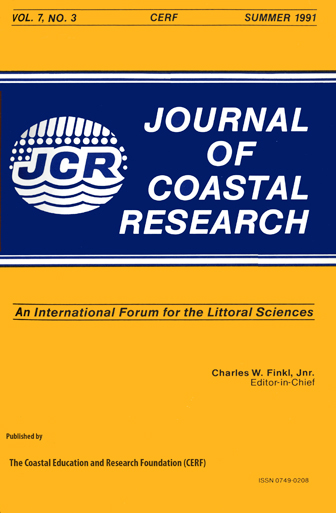Groundwater-Table Responses to Wave Run-up: An Experimental Study From Western Australia
Keywords:
Beachface, groundwater, run-up, swash, beach water-tableAbstract
Groundwater-table responses to wave fun-up were observed on a natural sandy beach at South City Beach, Western Australia. The run-up spectrum was dominated by a broad band of swell energy. In contrast the groundwater spectrum was dominated by low-frequency energy. Thus the beachface and sediment matrix effectively filter input swash oscillations as they are transmitted through to the groundwater-table. The filtering appears to be that of a band-pass filter in which oscillations with a frequency of 0.013 Hz (77 s) are less attenuated than either longer or shorter period fluctuations. Despite intense filtering, groundwater-table oscillations at incident swell frequencies were still detected. These oscillations were closely related to swash motions on the beachface. Low-amplitude run-up did not induce a detectable response in the groundwater-table, and the groundwater-level continued to decline. Swashes with moderate run-up resulted in the transmission of a pressure force, via the saturated sands, which induced a temporary stabilizing of the falling groundwater-level. Swashes that extended beyond the mean groundwater-table level caused the groundwater-table to rise. The water-table rise and rate of rise were directly related to the amplitude of swash run-up. The groundwater-table rise was caused by swash water infiltration and in part by the reversed Wieringermeer effect. A groundwater-table response asymmetry was detected whereby the groundwater-level rises more rapidly than it falls.


